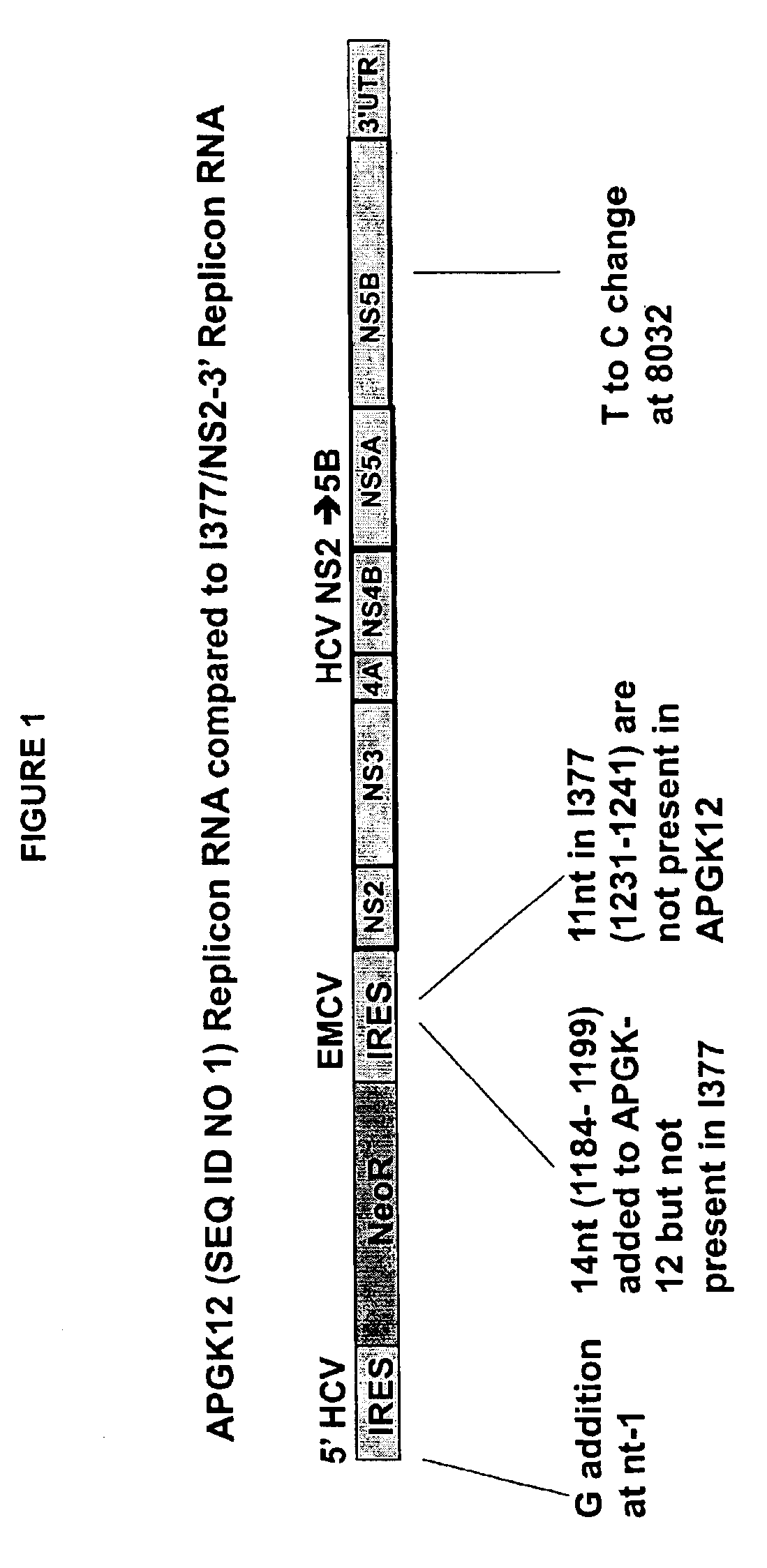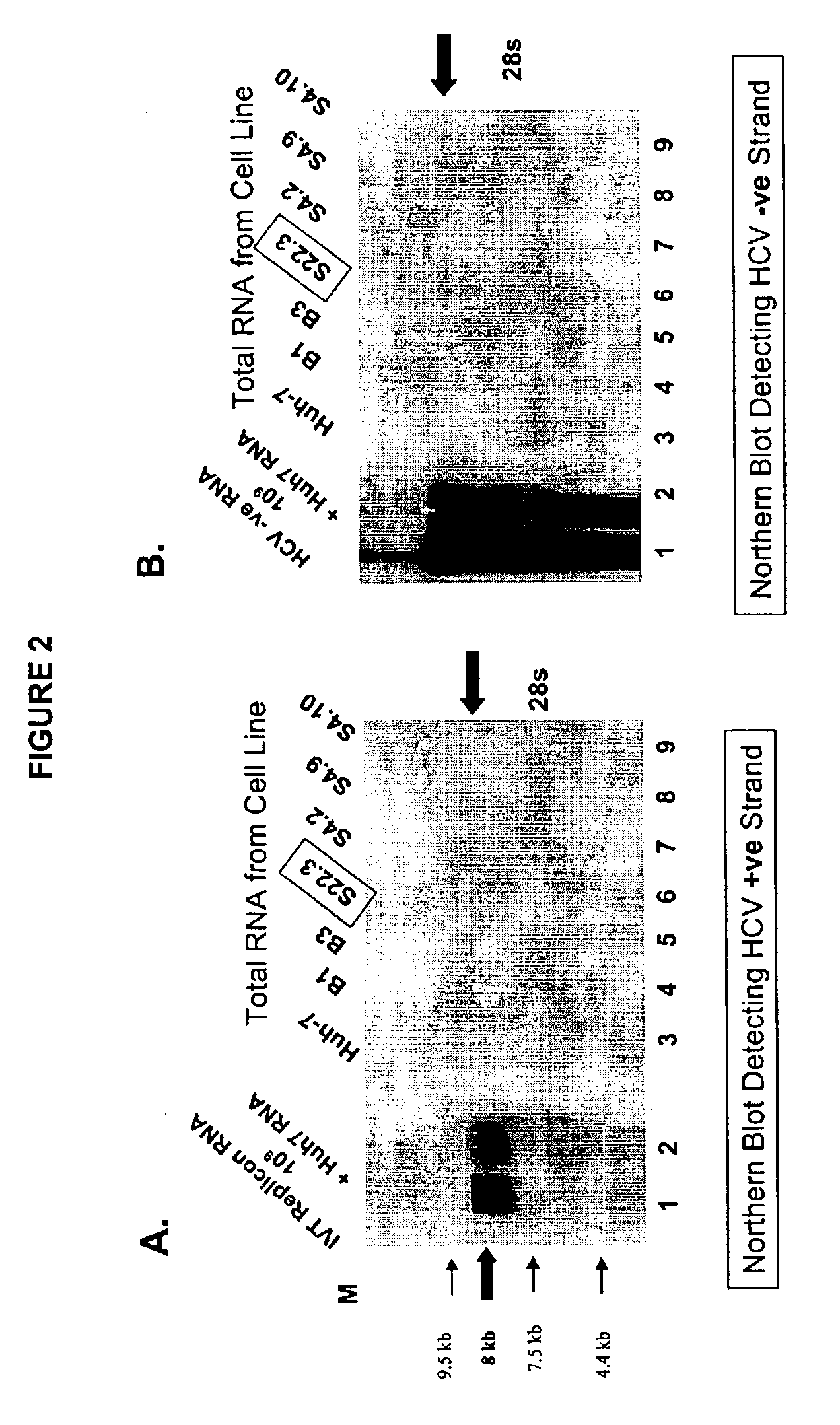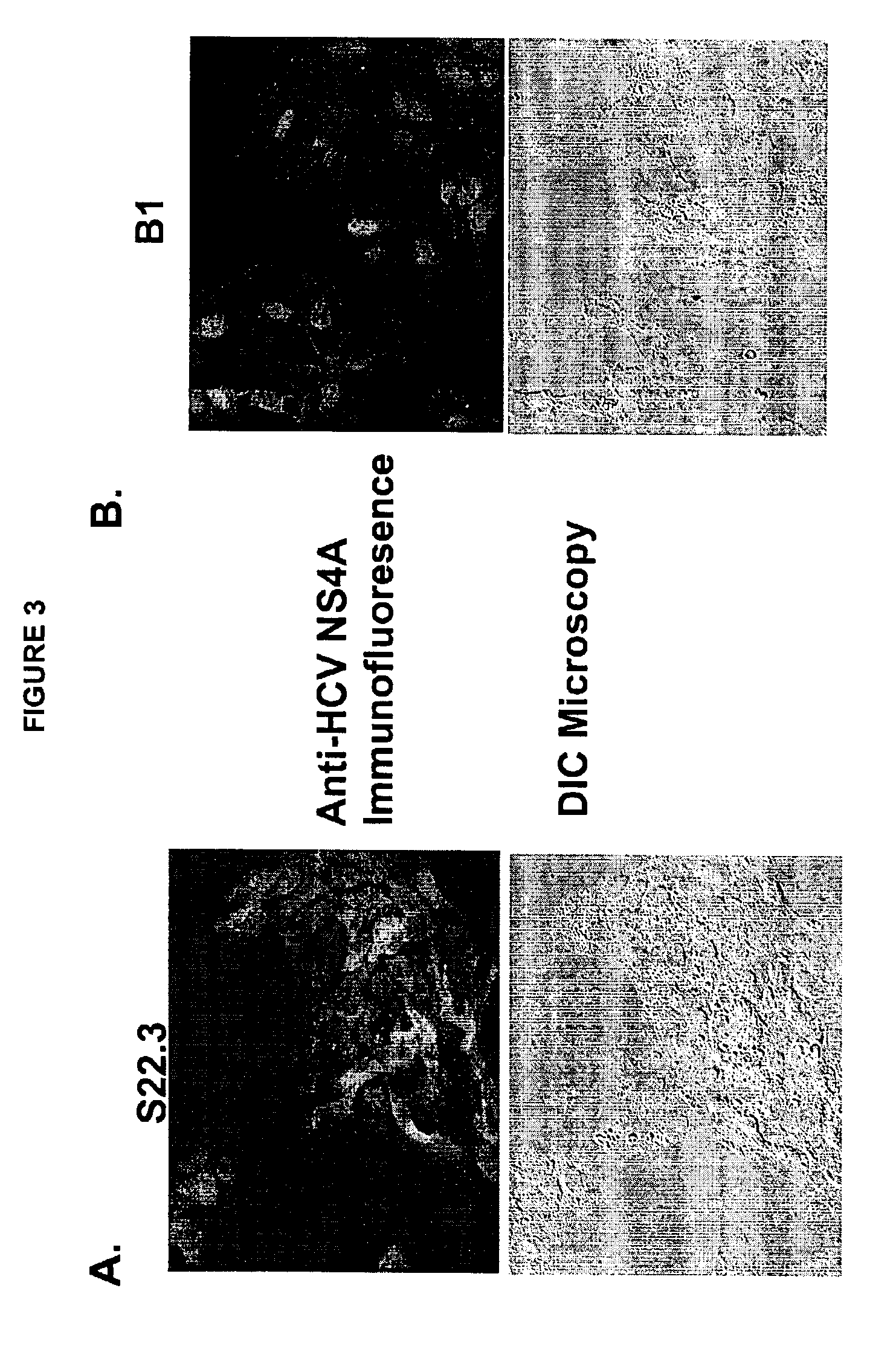Self-replicating RNA molecule from hepatitis C virus
a molecule and molecule technology, applied in the field of hcv rna molecule, can solve the problems of large proportion of relapse after termination of treatment, no broad-based antiviral compound for the treatment of hcv infection, and the role of cellular and humoral immune responses in protecting against hcv infection and disease have not yet been established, so as to achieve the effect of high efficiency
- Summary
- Abstract
- Description
- Claims
- Application Information
AI Technical Summary
Benefits of technology
Problems solved by technology
Method used
Image
Examples
example 1
Replicon Constructs (APGK-12; FIG. 1)
[0098]pET9a-EMCV was obtained by ligating an oligonucleotide linker[0099]5′ gaattccagatggcgcgcccagatgttaaccagatccatggcacactctagagtactgtcgac 3′ (SEQ ID NO.9) to pET-9a (Novagen) that was cut with EcoRI and SaII to form the vector pET-9a-mod. This linker contains the following restriction sites: EcoRI, AscI, HpaI, NcoI, XbaI, ScaI, SaII. The EMCV IRES was amplified by PCR from the vector pTM1 with primers[0100]5′ cggaatcgttaacagaccacaacggfttccctc 3′ (SEQ ID NO.10) and 5′ ggcgtacccatggtattatcgtgtttttca 3′ (SEQ ID NO.11) and ligated into pET-9a-mod via EcoRI and NcoI to form pET-9a-EMCV.
[0101]The sequence of HCV NS2 to NS5B followed by the 3′UTR of HCV was obtained from the replicon construct I377 / NS2-3′ (Lohman et al., 1999 Science 285:110-113; accession number: AJ242651) and synthesized by Operon Technologies Inc. with a T to C change at the NcoI site in NS5B at nucleotide 8032. This sequence was released from an GenOp® vector (Operon Technologies)...
example 2
Primary Transfection of Huh7 Cells and Selection of Replicon Cell Lines
[0109]Human hepatoma Huh7 cells (Health Science Research Resources Bank, Osaka, Japan) were grown in 10% FBS / DMEM. Cells were grown to 70% confluency, trypsinized, washed with phosphate buffered saline (PBS) and adjusted to 1×107 cells / ml of PBS. 800 μl of cells were transferred into 0.4 cm cuvettes and mixed with 15 μg of replicon RNA. Cells were electroporated using 960 μF, 300 volts for ˜18 msec and evenly distributed into two 15 cm tissue culture plates and incubated in a tissue culture incubator for 24 hours. The selection of first and second generation replicon cell lines was with 10% FBS / DMEM medium supplemented with 1 mg / ml of G418. Cells were selected for 3-5 weeks until colonies were observed that were isolated and expanded.
[0110]Following the G418 selection and propagation of Huh-7 cells transfected with APGK12 (SEQ ID NO. 1) RNA, cells that formed a distinct colony were treated with trypsin and serial...
example 3
S22.3 Cell Line Constitutively Expresses HCV Non-Structural Proteins.
[0112]HCV non-structural protein expression was examined in the S22.3 cell line. FIG. 3 displays the result of indirect immunofluorescence that detects the HCV NS4A protein in the S22.3 cell line and not in the replicon negative B1 cell line (a G418 resistant Huh-7 cell line). Indirect immunofluorescence was performed on cells that were cultured and fixed (with 4% paraformaldehyde) onto Lab-tek chamber slides. Cells were permeabilized with 0.2% Triton X-100 for 10 minutes followed by a 1 hour treatment with 5% milk powder dissolved in phosphate-buffered saline (PBS). A rabbit serum containing polyclonal antibody raised against a peptide spanning the HCV NS4A region was the primary antibody used in detection. Following a 2 hour incubation with the primary antibody, cells were washed with PBS and a secondary goat anti-rabbit antibody conjugated with red-fluor Alexa® 594 (Molecular Probes) was added to cells for 3 hou...
PUM
| Property | Measurement | Unit |
|---|---|---|
| temperature | aaaaa | aaaaa |
| concentrations | aaaaa | aaaaa |
| length | aaaaa | aaaaa |
Abstract
Description
Claims
Application Information
 Login to View More
Login to View More - R&D
- Intellectual Property
- Life Sciences
- Materials
- Tech Scout
- Unparalleled Data Quality
- Higher Quality Content
- 60% Fewer Hallucinations
Browse by: Latest US Patents, China's latest patents, Technical Efficacy Thesaurus, Application Domain, Technology Topic, Popular Technical Reports.
© 2025 PatSnap. All rights reserved.Legal|Privacy policy|Modern Slavery Act Transparency Statement|Sitemap|About US| Contact US: help@patsnap.com



